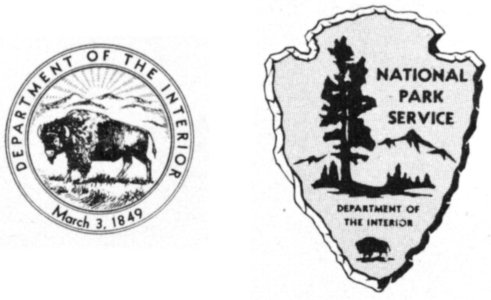
Cover: The Stone House. From a wartime photograph
Manassas
(Bull Run)
National Battlefield Park


DEPARTMENT OF THE INTERIOR
March 3, 1849
NATIONAL PARK SERVICE
DEPARTMENT OF THE INTERIOR
UNITED STATES DEPARTMENT OF THE INTERIOR
DOUGLAS McKAY, Secretary
National Park Service
Conrad L. Wirth, Director
REPRINT 1953 U. S. GOVERNMENT PRINTING OFFICE: 1953 O-F—237985
1Here was fought the opening field battle of the CivilWar and here a year later a Confederate victoryled to Lee’s first invasion of the North.
Manassas National Battlefield Park commemoratestwo great battles of the WarBetween the States fought in the vicinity ofBull Run, a small stream in northern Virginiaabout 26 miles southwest of Washington, D. C.The military significance of the Manassas arealay in the junction of two railroads. The Orangeand Alexandria Railway, which offered the onlydirect rail connection between Washington andRichmond, was joined there by the ManassasGap Railroad, a direct route to the strategicallyimportant Shenandoah Valley.
The opening battle of the war found ill-trainedcitizen armies of the North and Southengaged in a struggle for this strategic railroadjunction. On an eminence, known as HenryHouse Hill, 6 miles north of Manassas, Confederatearms finally put to rout the Federalforce. This victory, the English historian Fullerpoints out, was very important because it led“Southern politicians... to underestimate thefighting capacity of the enemy” and because it“so terrified Lincoln and his Government, thatfrom now onwards until 1864, east of the Alleghanies,the defense of Washington became thepivot of Northern strategy.”
Approximately a year later, both armies, nowcomposed of seasoned veterans, were locked ina bitter struggle on the same field. After heavyfighting, the Federal Army was forced backupon the defenses of Washington. SecondManassas stands with Chancellorsville as one ofthe two most significant Confederate victoriesof the war—in both cases the military resultwas invasion of the North. After Second Manassascame Antietam; after Chancellorsvillecame Gettysburg.
First Battle of Manassas
July 21, 1861
The Manassas campaign began shortly afterthe outbreak of hostilities in 1861. Twenty-four2days after the firing on Fort Sumter, Lee orderedthe fortification of Manassas Junction, and 7days later Beauregard took command of thesedefenses. Meanwhile, the North clamored for aquick move to capture Richmond and end thewar. Forced on by this popular pressure,McDowell launched his drive on July 16 withan army composed chiefly of 3-months volunteers.He planned to attack the Confederateforces at Manassas while Patterson prevented a